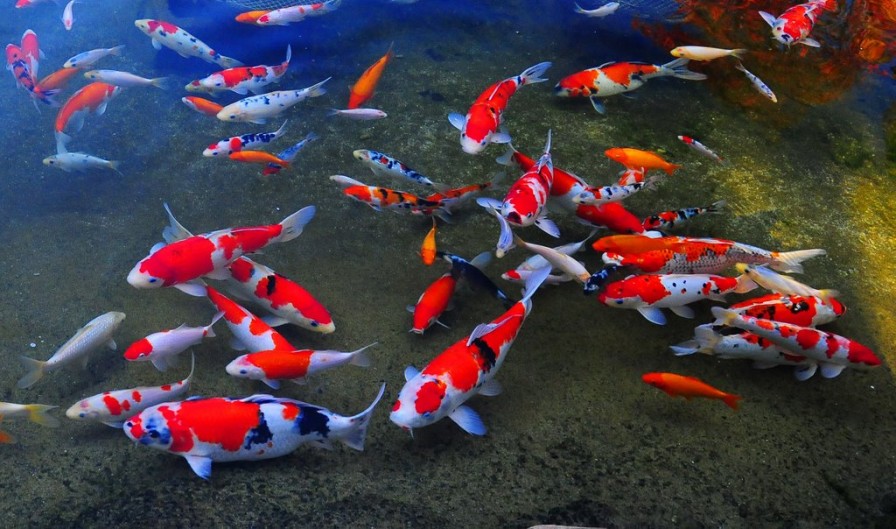A water feature adds a relaxing design element to any yard, and makes for an interesting conversation piece. There is, of course, a significant amount of maintenance involved with managing water features, and especially one populated with Koi fish. Taking proper care of your Koi pond from the beginning will help you to avoid any complications later on.
Koi fish are traditionally low-maintenance fish, but as with all living creatures, their surroundings have a major affect on their health. One of the most important things to monitor is water quality. Precipitation, natural run-off, leaves, and other unwanted debris could get into the pond and have a detrimental affect. One can’t predict precisely how a pond will be influenced by its surroundings, so regular water quality checks will benefit your fish greatly.
Before your Koi can be introduced into your pond, it is recommended that you quarantine new fish for a minimum of 3 weeks in a separate tank.
Skipping this step risks exposing your existing fish to any health problems the new additions may introduce to the population. Refrain from feeding the Koi for a few days until they have become comfortable with their surroundings.
During the quarantine period, it is important to equalize the temperature of the quarantine tank with that of the pond. Slowly acclimating the fish will allow their metabolism to accommodate the change in temperature. Please remember that straight tap water cannot be used to fill your pond, as the chlorine in our municipal water systems can kill the Koi. It is possible, through chemical intervention, to reduce the chlorine concentration enough to make the water habitable for Koi, but an easier solution is to use rainwater instead.
Once your pond is filled, cover it with a net to prevent the stressed Koi from jumping out. You’ll also need to add a biological water filter and ensure a 1% salt concentration based on total water volume.
Overfeeding can be a major problem for Koi. They should be fed 1-2 times per day, depending on how quickly you want them to grow. The more you feed them, the more excess food will collect in the pond. This decreases water quality and can potentially clog your filter. More frequent feeding also increases the amount of waste your fish will excrete. Pond bottom drains that flow into the filter are a good way to keep your water clear of detritus. Filters should be checked and cleaned regularly, and over time you may need to improve your filtration system to keep up with your growing Koi.

